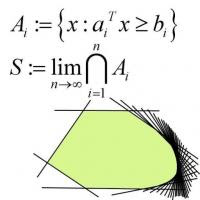- Since the 1980s, the rise of the U.S. financial sector has led to a series of increasingly severe financial crises. Each crisis has caused more damage, while the industry has made more and more money.
This got me back to this piece of work I did some time ago on showing that a "fixed proportion portfolio" with a re-balancing trading strategy made more money the greater the volatility in the market was. (Of course the finance literature had proven that long ago, but I wanted to do it myself and in a form I was interested in.)
In this trading strategy, the fundamental observation is that if the market goes up and comes back down to the starting level, or down then back up to the starting level, the trader would have made a strictly positive amount that increases in the size of the swing.
There's no need to look up the proof. I've since lost the little paper scraps. Do this in Excel, re-balance with each price movement. You can verify this in simulation. And if you go further and do a full simulation with percentage transaction costs, you'll find that there is a level of volatility that gets you positive profit most of the time, and that that more volatility means more money.
The upshot of this is that the larger market volatility is, the more investors adopting a dumb strategy like that stand to make. More volatility means that time is being "compressed", with more swings per unit time and hence more money.
What I am saying is, this is a very basic trading strategy that means buy after a fall, sell after a rise. This is based on a random market with no inside information. In this, in so far as they can control it, there is no incentive for traders to keep volatility down. This would tangentially point to the conclusion that Finance, as an industry, has no incentive to do away with crises as those provide the biggest swings, and the way back up is paved in (bonus) gold.




No comments:
Post a Comment